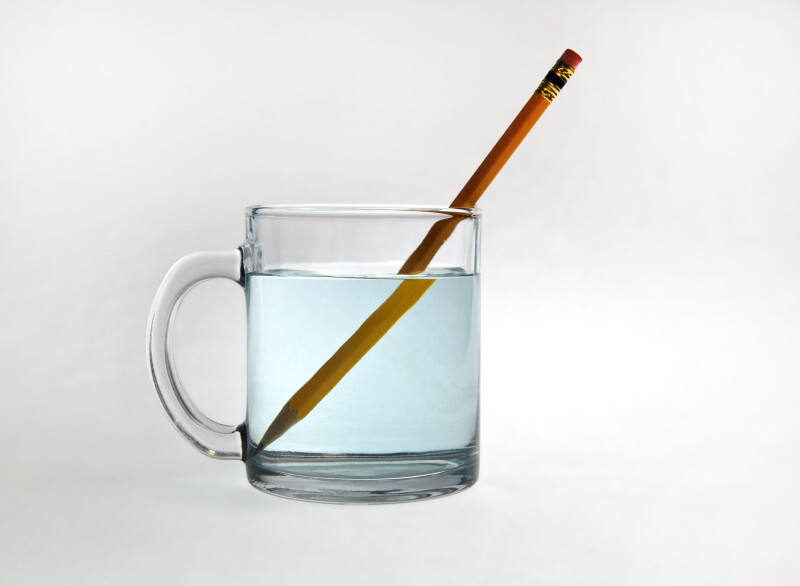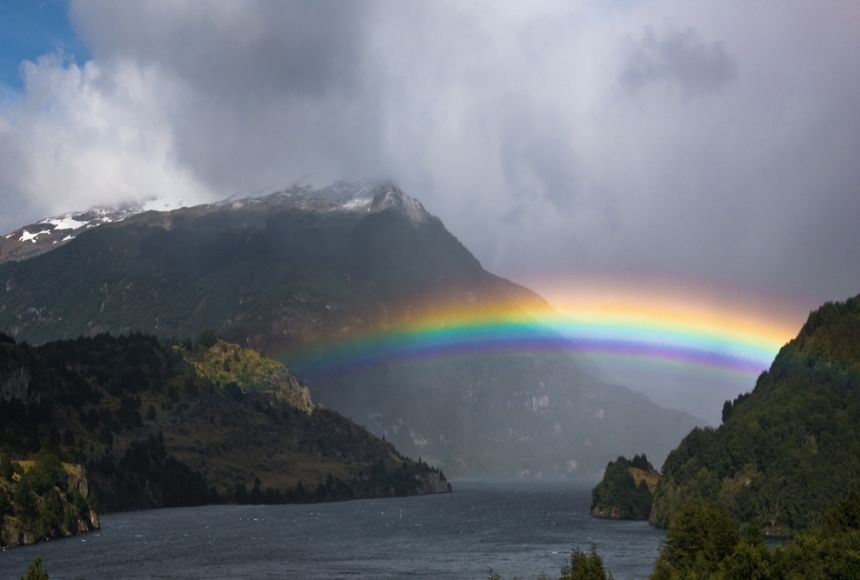Introduction
Subject: Science

Overview
The speed of light in various media, such as water and air, can be divided into rarer and denser media. Denser media have a lower speed of light, while rarer media have a faster speed. For example, air has the fastest speed of light, while diamonds have the slowest. However, a medium with a higher optical density does not necessarily have a denser physical environment. Light refraction, which alters the direction of light rays as the medium changes, can distinguish between rarer and denser media.
A pencil that has been partially dipped in water is seen in Figure 1 bending at the air-glass interface, or the area where water and air meet. This phenomenon is connected to the variation in light wave speed between water and air media.
Figure 2 depicts air bubbles glistening in the water, akin to the reflection of light from a mirror's surface. In this instance, light traveling from a body of water to an air medium is reflected off of the water's exterior rather than entering it. Similarly, the idea behind optical fiber construction is that light traveling through one optical medium and back again is reflected back into the original medium.
Figure 3 illustrates how a hand lens magnifies the alphabet when light from the letters flows through it. When looking through the hand lens, the alphabets appear huge due to the unique structure of the glass used in the lens.
Figure 4 shows a rainbow. The light from the sun breaks into its seven component colors during the production of a rainbow. To perceive the seven colors of the rainbow, the cone cells situated in the inner rings of our eye play a crucial role. To us, a rainbow is like a far-off thing. Because our eyes have natural lenses similar to the hand lens, it is now feasible to see both nearby and distant objects.
Sometimes the loss of transparency or the eye's inability to adjust the lens's thickness causes our vision to become blurry. Some people struggle with issues including blurry vision, difficulty distinguishing colors, or difficulty seeing local or distant objects. Having one's eyes examined and donning glasses with appropriately powered lenses will address the issue of having trouble seeing close-up or distant objects.
A variety of man-made or natural transparent media transmit the light from the items we see. In these media, light travels at a different pace. By comparing the speeds of light in two different mediums, these can be divided into rarer and denser media.
Denser and Rarer Medium
A transparent medium is the material that allows light to go through it. Three distinct transparent mediums are glass, water, and air. The table below shows the speed of light in a few different media.
| Medium | Speed of Light (m/s) | Medium | Speed of Light (m/s) |
| Air | 3.00× 10-8 | Kerosene oil | 2.08× 10-8 |
| Water | 2.25× 10-8 | Glass | 2.00× 10-8 |
| Alchohol | 2.19× 10-8 | Diamond | 1.24× 10-8 |
According to the preceding table, light travels at the fastest speed in the air and the slowest speed in diamonds among the specified media. The denser medium in a given pair of media is the one where the speed of light is lower than in the other. Similarly, the rarer medium is the one in which light travels at a relatively faster pace. Glass, for instance, has a higher density than air. In this instance, glass is a denser medium and air is a rarer one.
Question to think
The above table compares the speed of light in kerosene oil and water. Does a medium with a higher optical density necessarily have a higher physical density?
The fact that kerosene oil floats atop water indicates that its physical density is lower than that of water. When comparing the light speeds in these two mediums, the light speed in the kerosene oil is slower than the light speed in the water. Therefore, a medium having a higher optical density in comparison does not necessarily imply a denser physical environment. Denser and rarer media can be distinguished from one another when light is transferred between them based on how the direction of the light ray changes as the medium changes, a process known as light refraction.
Things to remember
- The variation in light wave speed affects the speed of light in various media, such as water and air.
- In water, light is reflected off the water's exterior, similar to the concept behind optical fiber construction. In air, light is reflected off the water's exterior, similar to the structure of a hand lens.
- Transmitting light can be divided into rarer and denser media.
- Light refraction, which alters the direction of light rays as the medium changes, can distinguish between rarer and denser media.
© 2021 Saralmind. All Rights Reserved.




 Login with google
Login with google